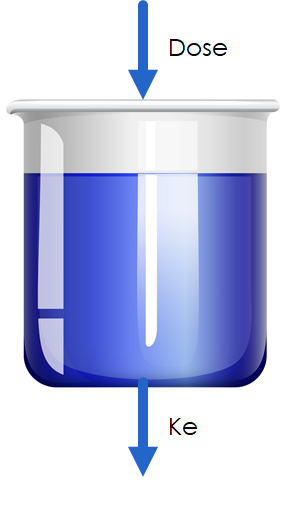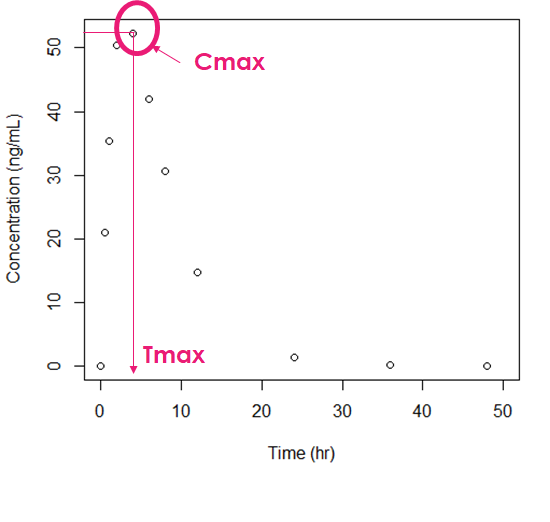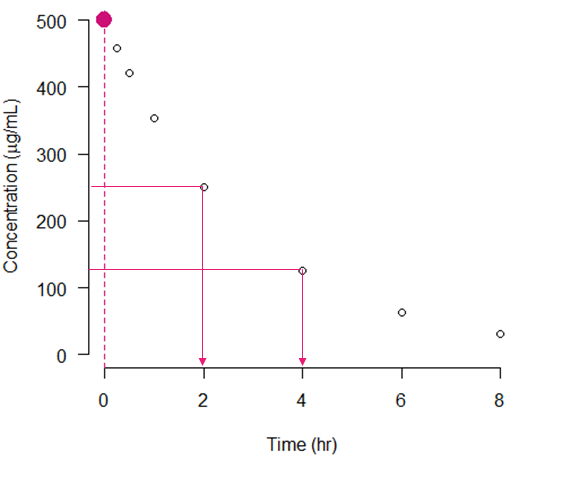Non-Compartmental Analysis
What is the purpose of non-compartmental analysis?
Non-compartmental analysis of pharmacokinetic data provides basic information on the exposure of drug, typically in plasma. This allows us to compare drug exposure to potential safety and efficacy endpoints of concern. Non-compartmental analysis plays a critical role in guiding drug development from preclinical studies through first in human studies in healthy volunteers, other clinical pharmacology studies and in patient studies all the way to drug approval and post-marketing commitments.
Non-Compartmental Model
In a non-compartmental model we assume the person to be like a well-stirred beaker. The entire dose is considered equally distributed through the body. Although this is not technically true, non-compartmental analysis can be very helpful, especially since we do not need to make any assumptions about the model and all analyses are based on observed data.

What are the assumptions of NCA?
In a non-compartmental model we assume the person to be like a well-stirred beaker. The entire dose is considered equally distributed through the body. Although this is not technically true, non-compartmental analysis can be very helpful, especially since we do not need to make any assumptions about the model and all analyses are based on observed data.
NCA pharmacokinetic parameters

Cmax – maximal observed concentration. Since this is based on observed data, it is important that sufficient blood samples are taken over the time period where we expect Cmax in order to accurately determine this concentration.
Tmax – time of maximal observed concentration
AUC – area under the concentration vs time profile allows us to better understand exposure following single or multiple doses

Half-life – Is the time for concentration to decline to 50% it’s initial value. This is useful to understand how drug concentration can accumulate with multiple dosing or how much time is needed to completely washout of the body.
Volume of Distribution – is a hypothetical volume rather than based in relation to total body weight or volume. It is calculated based on the volume required to account for a given dose.
Systemic Clearance – Represents the volume cleared per unit time.
Summary
In summary NCA is a tool that can facilitate drug development in a timely manner and requires few underlying assumptions. Since NCA uses observed concentration vs time data, it is important to design studies well in order to optimize PK sample collection. NCA can produce a wealth of parameter data, but it is important to keep in mind whether these parameters are supported by the underlying PK data.




